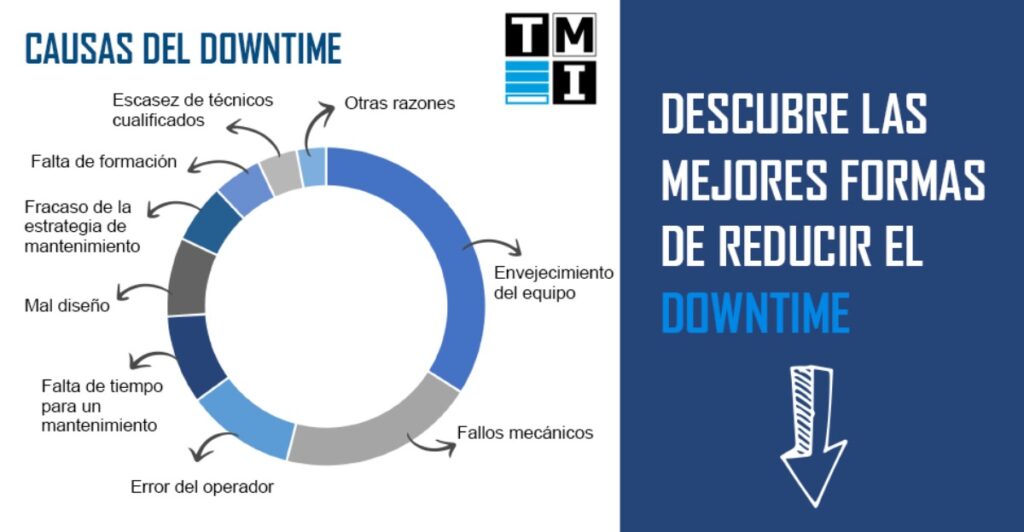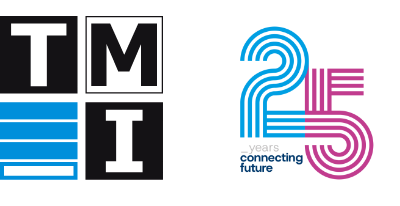WHAT IS DOWNTIME?
Downtime is defined as any period in which a system or piece of equipment is unavailable, and it’s one of the main KPIs used to evaluate the performance of a line. It can be planned, as in the case of scheduled maintenance, or unplanned, due to an unforeseen event that requires some type of intervention.
The result, in both cases, is the same: the system stops, and so does your production. Unsurprisingly, this particular KPI doesn’t have many fans…. Nonetheless, it’s an essential one and can provide a lot of insight into which actions you should include in your preventive maintenance strategy.
As a general rule, to ensure continuity of production, you should aim for a ratio of 90% uptime and 10% downtime.
WHAT CAUSES DOWNTIME?
It may seem there are so many things happening every day, so many repairs and maintenance tasks to perform, that it’s hard to get a clear picture of the main culprits. However, a study published in 2020 by the Plant Engineering Magazine has managed to list and quantify them:
- 34% due to outdated machinery
- 20% due to mechanical failures
- 11% due to operator error
- 9% due to a lack of time for maintenance
- 8% due to poor equipment design
- 6% due to failure of the maintenance strategy
- 5% due to a lack of proper training for operators
- 4% due to a shortage of skilled technicians
- 3% due to various other reasons
Now that we’ve identified the main causes of downtime, the next step is to think about how to address them.

6 WAYS TO REDUCE END-OF-LINE DOWNTIME
1. MODERNISE YOUR EQUIPMENT OR DO SOME REVAMPING
Revamping? As in redecorating?
Not quite. Revamping is the term used to describe the practice of breathing new life into industrial machinery; it aims to improve it while still retaining and reusing any functional parts. This means that updating your bagging machine or palletiser need not require such a substantial investment nor generate so much waste by simply replacing old with new: in some cases, working with a revamping plan to change the most obsolete components in the control cabinet, motors, frequency converters, etc., can revive a bagging machine that no longer works to its full capacity, and even improve on it.
Of course, successful revamping starts with a preliminary study of all the parts and tasks needed to update your bagging or palletising machine. If you think your bagging line is reasonably serviceable mechanically speaking but starting to show its age, contact TMI’s customer service department so they can assess your requirements.
In some cases, revamping won’t be an option (due to structural deterioration, new techniques, etc.). In that situation, the best thing you can do is replace your old bagging machine with a new, more modern version. Keep in mind that:
- Investing in a new bagging and palletising line can significantly increase reliability and, therefore, productivity, particularly during the first few years. Moreover, drawing up an appropriate maintenance plan will extend its useful life.
- Replacing a bagging machine or palletiser does necessarily mean having to replace all the components around it: you may be able to take advantage of some parts of your existing bagging line by integrating elements like conveyor belts, roller tracks and bag stitchers into the new machinery. This is why we recommend you assess the condition of the peripheral components and identify any parts that still work. Contact our sales department to request a case study and made-to-measure solutions for your business.
2. SET A REALISTIC PREVENTIVE MAINTENANCE PLAN
Preventive maintenance consists of a series of planned actions that help extend the useful life of equipment, reducing maintenance costs in the long and short term. When machinery is kept in good working order, clean and well-adjusted, its mechanical parts and components don’t suffer as much wear and tear and maintain the performance for which they were made for longer. Thus, preventive maintenance is a highly effective way of ensuring the proper operation of critical points on the production line and extending its useful life.
Following your preventive maintenance plan correctly will reduce mechanical failures and directly impact the reliability of the equipment and the availability of your bagging line. It will also ensure sufficient time is set aside to carry out the maintenance – as long as you’ve been realistic in your planning, taking into account the available resources.
3. MONITOR YOUR EQUIPMENT
Before you can reduce something, you first need to obtain accurate data on its magnitude. In other words, to reduce downtime, you need to know how much time it accounts for compared to uptime and what’s causing it. Let’s break it down:
You can use the following equations to calculate your downtime to uptime ratio:


This allows you to see your downtime and uptime as a percentage of the total time considered in the calculation.
If you’re observant, you will have no doubt realised that to perform this calculation, you first need the answer to a crucial question: How many hours of downtime have there been? Downtime isn’t just comprised of stoppages for routine maintenance, but also the times when the bagging machine has to be stopped to replace consumables (bags) or products or when the pallets in the palletiser dispenser haven’t been replaced, for example. Numerous things can cause stoppages throughout the day, and these also affect the availability of the bagging line.
It’s important to record all these stoppages, as well as their causes. An excellent way to do this is to equip the machinery in your line with OEE performance measurement modules, that collect this data and provide relevant real-time data on availability. You can then respond to that information by taking the necessary corrective steps to reduce the impact on the machinery’s availability.
An OEE module that can tell you not only how long a machine stopped but also why it stopped can be incorporated in all of TMI’s automatic bagging machines, palletisers and wrapping systems, allowing you to take corrective measures based on real data.
4. INVEST IN TRAINING
Popular culture is clear on the subject: “Knowledge is power”, and studies in the field prove it: training employees to do their jobs well leads to significant increases in their productivity.
And not just that: If your line operators have a good understanding of the machines they use, they’ll know which functions they need to use in different situations and how to act in the event of a stoppage. Similarly, if your maintenance staff have an in-depth knowledge of the machines in the production line, they’ll be much quicker at finding the cause of a stoppage and repairing it and at identifying any components that need monitoring.
The graph we referred to at the beginning of this article cites three of the main causes of downtime as being operator error (11%), a lack of proper training for operators (5%), and a shortage of skilled technicians (4%).
If you think about it, this means that providing an appropriate training plan for your operators could reduce your line downtime by up to 20%! And that would more than justify an investment in training that would give your operators the theoretical and practical knowledge they need to use the machines correctly and keep them in good condition.
TMI offers a continuous training service that not only trains your employees in handling the bagging line from scratch but also keeps their knowledge fresh and regularly addresses any issues that crop up.
5. OPTIMISE YOUR INVENTORY
For preventive maintenance and reactive repairs to be as efficient as possible, you should try to keep the parts most likely to need replacing in stock.
Keeping a stock of critical parts and pre-assembled modules can mean a stoppage that would otherwise last for days while you wait for a part from the manufacturer may only last for hours or even minutes.
TMI’s Spare Parts service can help keep your spare parts inventory up-to-date, so you never have to wait for parts to carry out maintenance or repair a breakdown.
6. MAKE THE CHANGE TO INTERACTIVE DOCUMENTS
Have you thought about the manuals for your machines? Are they zillion-page booklets that take forever to flip through to find the part you need?
Presenting information like that no longer makes sense in the 21st century as we move into Industry 4.0. Today’s technology allows us to present information in a much more efficient and interactive way.
At TMI, we’re always at the forefront of technology, so our teams have already created interactive documents that put all the references you need at the touch of a button: simply click on an area of a machine to see an exploded view and a list of part references.
And this valuable time-saver comes as standard with all newly manufactured TMI machines.
Do you have an older TMI bagging, palletising or wrapping line in operation? TMI’s technical department can analyse your equipment and provide a quote to recreate your documents in a virtual format to streamline your procurement process and free up the time you currently spend looking for the parts references you need. Less time spent looking for references means shorter machine stoppage times, and shorter machine stoppage times mean less downtime.
ALWAYS BY YOUR SIDE
This isn’t just our customer service motto; it’s our top priority: whether you’re already a TMI client or looking to improve your end-of-line availability, we can provide made-to-measure solutions for your business. Get in touch using this form or contact our Customer Service team directly to find out how we can help.


